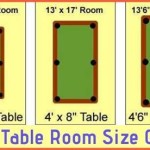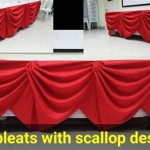3 Types of Table Set Up
Table setting, also known as table arrangement, is the way to set a table with tableware—such as eating utensils and for serving and eating. The table arrangement for each place setting will depend on the kind of service, the menu, and the overall formality of the occasion. Understanding the principles of table setting ensures a functional and aesthetically pleasing dining experience. There are three primary types of table settings: basic, informal, and formal. Each style caters to different events and reflects a specific level of sophistication.
Basic Table Setting
The basic table setting is typically used for everyday meals and casual dining occasions. It is simple, practical, and prioritizes functionality over elaborate presentation. The focus is on providing the essential utensils and tableware needed for a standard meal without unnecessary ornamentation.
The core components of a basic table setting include a dinner plate placed in the center of the place setting. To the left of the dinner plate is the dinner fork. This placement follows the standard rule that utensils are arranged in the order they will be used, working from the outside in. To the right of the dinner plate is the dinner knife, with the cutting edge facing the plate. Next to the dinner knife is a soup spoon, if soup is part of the meal. Above the dinner plate, typically to the right, is a water glass. A napkin can be placed either to the left of the fork or on top of the dinner plate.
Variations of the basic table setting may include a side plate for bread and butter, positioned above the fork on the left. A butter knife can be placed horizontally across the side plate. The basic table setting is designed for ease and efficiency. It is suitable for family dinners, casual lunches, and informal gatherings where a more elaborate setup is not required.
This type of setting emphasizes practicality without sacrificing elegance. The uncluttered arrangement makes it easy for diners to navigate the table and enjoy their meal comfortably. The basic table setting serves as a foundation, which can be modified and upgraded to suit more formal occasions.
Adaptations of the basic setup may involve adding a placemat or tablecloth to enhance the aesthetic appeal. The choice of tableware can also influence the overall impression. Using quality plates, silverware, and glassware elevates the dining experience, even in a simple setting. The basic table setup, therefore, is a versatile and adaptable option for everyday dining, providing a functional and pleasant setting for any casual meal.
Informal Table Setting
The informal table setting, also known as a casual table setting, bridges the gap between a basic and a formal arrangement. It is commonly used for occasions such as family gatherings, casual dinner parties, and holiday meals where a more refined presentation is desired without the strict protocols of a formal setting.
Building upon the basic setup, the informal table setting includes additional elements to enhance both function and aesthetic appeal. The dinner plate remains the central element, with the dinner fork to its left. A salad fork may be added to the left of the dinner fork, indicating that a salad course will be served. To the right of the dinner plate are the dinner knife and a soup spoon, if applicable. Above the dinner plate, you'll find a water glass and, typically to its right, a wine glass.
A napkin is usually placed to the left of the forks or on the dinner plate, adding a touch of elegance. A side plate for bread and butter is positioned above the forks, accompanied by a butter knife placed horizontally or diagonally across the plate. Depending on the menu, additional utensils may be included, such as a seafood fork or dessert spoon, placed appropriately according to the order of courses.
The positioning of glassware is a key element in the informal setting. A water glass is always present, and a wine glass is added if wine will be served. The type of wine glass can vary depending on the wine being offered, with different shapes designed to enhance the aroma and flavor of specific varietals. Informal table settings often incorporate decorative elements to enhance the visual appeal. Placemats or tablecloths can be used to add color and texture to the table. Centerpieces, such as floral arrangements or candles, can create a warm and inviting atmosphere. The choice of tableware also plays a crucial role. Using coordinated plates, silverware, and glassware contributes to a cohesive and polished look.
The informal table setting strikes a balance between practicality and presentation. It provides diners with the necessary utensils and tableware for a multi-course meal while maintaining a relaxed and comfortable atmosphere. The arrangement is more detailed than a basic setting, but it avoids the rigid formality of a formal setup. This makes it suitable for a wide range of occasions where a touch of elegance is desired without excessive formality.
The adaptability of the informal table setting allows for personalization. Hosts can tailor the setting to reflect their personal style and the theme of the event. Adding decorative elements, such as themed napkins or place cards, can add a unique and memorable touch. The informal table setting is, therefore, an excellent choice for creating a welcoming and stylish dining experience without the constraints of formal etiquette.
Formal Table Setting
The formal table setting represents the highest level of elegance and sophistication in dining arrangements. It is reserved for special occasions, such as elaborate dinner parties, banquets, weddings, and other events where meticulous attention to detail is paramount. Every element of the formal table setting is carefully considered to create a refined and luxurious dining experience.
The formal table setting is characterized by its precise arrangement and abundance of tableware. The centerpiece is the charger plate, a large decorative plate upon which other plates are placed. The dinner plate is placed on top of the charger plate, and a soup bowl may be placed on top of the dinner plate if soup is being served. To the left of the charger plate are the forks, arranged in order of use from the outside in. This typically includes a salad fork, a fish fork (if fish is on the menu), and a dinner fork.
To the right of the charger plate are the knives, also arranged in order of use. This usually includes a dinner knife, a fish knife (if applicable), and a soup spoon. A butter knife is placed horizontally across the bread plate, which is positioned above the forks on the left. Above the charger plate are the glassware, which can include a water glass, a red wine glass, a white wine glass, and a champagne flute, depending on the beverages being served.
The napkin is often elaborately folded and placed on the charger plate or to the left of the forks. Place cards are used to indicate seating arrangements, adding a personal touch to the formal setting. The formal table setting often includes additional utensils and tableware based on the specific menu. A dessert spoon and fork are typically placed above the charger plate, with the spoon pointing right and the fork pointing left. Coffee or tea cups and saucers are brought out after the meal.
The arrangement of glassware is particularly important in a formal setting. The glasses are arranged in descending order of size, with the water glass closest to the diner and the wine glasses arranged to its right. The type of wine glass used depends on the wine being served, with specific shapes designed to enhance the characteristics of different varietals. The formal table setting emphasizes symmetry and balance. Every element is carefully aligned to create a visually pleasing and harmonious arrangement.
The choice of tableware is crucial in conveying the level of formality. Fine china, crystal glassware, and sterling silver silverware are typically used to create a luxurious and elegant atmosphere. The formal table setting is not only about aesthetics but also about etiquette. Proper use of utensils and adherence to dining protocols are expected in a formal setting. This includes starting with the outermost utensils and working inward as the courses are served. The formal table setting represents the epitome of dining elegance and requires a high level of attention to detail. It is reserved for special occasions where creating a memorable and sophisticated experience is the goal. The precision and elegance of the formal table setting contribute to the overall ambiance of the event, making it a truly special occasion.

Table Setting Diagrams Formal Fine Casual More Set Ups

Table Setting Diagrams Formal Fine Casual More Set Ups

Table Setting Diagrams Formal Fine Casual More Set Ups

The Three Types Of Table Settings Everyone Should Know Jes

The Three Types Of Table Settings Everyone Should Know Jes

5 Types Of Restaurant Table Setting Every Owner Must Know

The Three Types Of Table Settings Everyone Should Know Jes

Proper Table Setting 101 Everything You Need To Know Emily Post

Mastering French Table Manners
Place Setting
Related Posts








